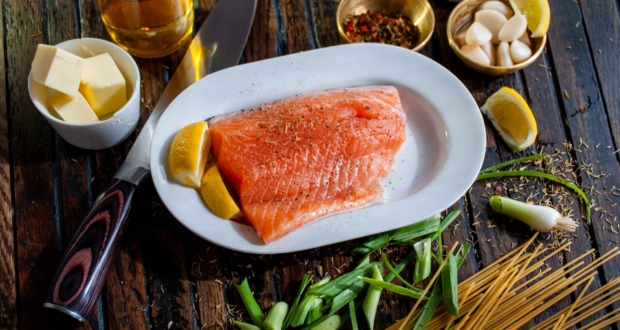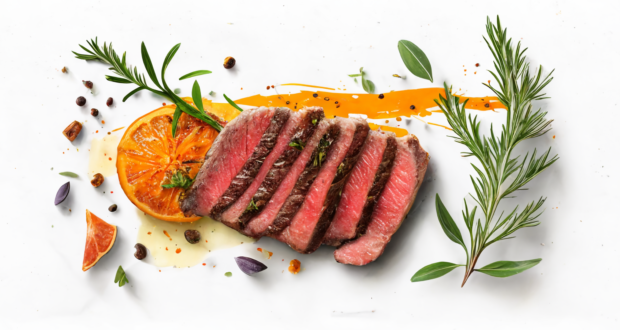If you’re interested in changing your eating habits to improve your health, you may have come across the paleo and ketogenic diets. Both of these diets have gained popularity in recent years, with proponents claiming that they can help with weight loss, increase energy levels, and improve overall health.
In this article, we’ll take a closer look at the paleo and ketogenic diets, compare and contrast the two, and help you determine which one may be right for you.
What is the paleo diet?
The paleo diet, also known as the caveman diet or the hunter-gatherer diet, is based on the idea that humans should eat the same foods that our ancestors ate during the Paleolithic era, which dates from 2.6 million to 10,000 years ago.
According to this philosophy, the modern diet, which is high in processed foods and refined sugar, is responsible for a number of health problems, including obesity, heart disease, and type 2 diabetes.
The paleo diet consists of whole, unprocessed foods such as:
- Meat and poultry
- Fish and seafood
- Eggs
- Vegetables
- Fruit
- Nuts and seeds
- Healthy fats from oils and avocado
Foods to avoid on the paleo diet include:
- Grains (wheat, barley, oats, corn, etc.)
- Legumes (beans, lentils, peanuts, etc.)
- Dairy products
- Refined sugar
- Processed foods
What is the ketogenic diet?
The ketogenic diet, also known as the “keto diet,” is a low-carb, high-fat diet that was originally developed to help manage epilepsy in children. The idea behind the diet is that by reducing carbohydrates and increasing fat intake, the body will enter a metabolic state called ketosis, where it burns fat for energy instead of glucose.
The ketogenic diet consists of:
- High amounts of healthy fats (70-75% of daily caloric intake)
- Moderate amounts of protein (20-25% of daily caloric intake)
- Very low amounts of carbohydrates (5-10% of daily caloric intake)
Foods to include in the ketogenic diet include:
- Meat and poultry
- Fish and seafood
- Eggs
- Nuts and seeds
- Low-carbohydrate vegetables such as leafy greens and cruciferous vegetables
- Healthy fats from coconut oil, olive oil, butter, and avocado
Foods to avoid on the ketogenic diet include:
- Grains (wheat, barley, oats, corn, etc.)
- Legumes (beans, lentils, peanuts, etc.)
- Most fruits (except for small portions of berries)
- High-carbohydrate vegetables such as potatoes and corn
- Refined sugar and processed foods
Comparing paleo and keto
At first glance, the paleo and ketogenic diets may seem similar. Both emphasize the consumption of whole, unprocessed foods and discourage the consumption of refined sugar and processed foods. However, there are some key differences between the two diets.
macronutrient ratios
The biggest difference between the paleo and ketogenic diets is the macronutrient ratios. The paleo diet emphasizes a balanced macronutrient ratio of approximately 40% carbohydrates, 30% protein, and 30% fat. In contrast, the ketogenic diet is much higher in fat, with a macronutrient ratio of 5-10% carbohydrates,
20-25% protein, and 70-75% fat. This difference in macronutrient ratios is what makes the ketogenic diet a low-carb, high-fat diet and the paleo diet a higher-carb, lower-fat diet.
Food choices
Another difference between the two diets is the type of food that is encouraged or discouraged. The paleo diet allows for the consumption of some grains and legumes, while the ketogenic diet strictly prohibits these foods. Additionally, the paleo diet is more lenient when it comes to fruit, while the ketogenic diet restricts fruit intake to small portions of low-carbohydrate berries.
Health benefits
Both the paleo and ketogenic diets have been shown to have health benefits. The paleo diet has been shown to improve blood sugar control, reduce inflammation, and promote weight loss. The ketogenic diet has been shown to improve insulin sensitivity, reduce the risk of cardiovascular disease, and promote weight loss.
Which one is right for you?
Choosing between the paleo and ketogenic diets ultimately comes down to personal preference and health goals. If you’re looking to focus on reducing inflammation and improving overall health, the paleo diet may be a good choice. If you’re looking to specifically target weight loss and improve insulin sensitivity, the ketogenic diet may be a better option.
It’s also important to consult with a healthcare provider before making any drastic changes to your diet. They can help you determine which diet, if any, is right for you based on your individual health needs and goals.
In conclusion, both the paleo and ketogenic diets can be effective for promoting overall health and well-being. By carefully considering your personal preferences and health goals, you can choose the diet that works best for you.








